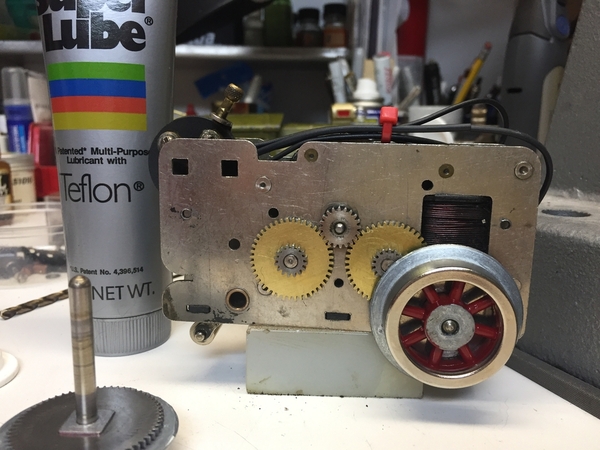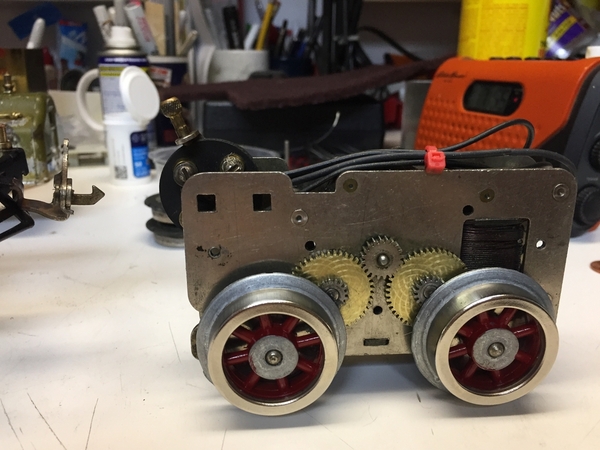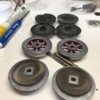I have a half dozen locomotives from the 1918 to 1925 period. Altogether there are only five or six that seem good and a few of those are uncertain. So I'd like to start a discussion about how to best handle replacements.
My immediate problem is a 252 that I'm restoring for a friend to use as a Christmas present. It has a type 5 motor with spoked wheels and a single intermediate gear. The motor works. One set of wheels seems OK, in gauge and turning freely. The other set is a disaster.
I have a few wheels from another 252 and a few from similar locomotives. Some have a type 6 motor with solid wheels and the double reduction gears. I see that the spacing is slightly different on wheels for the two motors. Configurations include
- spoked with 5/64 cast in spacer (could be 1/16 expanded).
- spoked wheel with gear flat against the wheel
- the gear seems flat on one side and about a 1/32 spacer on the inside.
- the solid geared wheels have a spacer, seems to be 3/32, to clear the inside teeth of the two intermediate gears on the motor.
I got the gear off a bad wheel and took another spoked wheel that I could file flat on the inside and get the gear to be flat against it. That gear had a gap in the spacer that I filled with Bondo. Put it all on an axle with what seemed to be a good wheel on the other side that had a cast spacer of about 1/64 and pressed to gauge in my vise, checking very carefully that it is straight. At first it seemed ok but then it began binding. I've fussed over it several ways and can't get rid of the bind.
I'm thinking now that maybe I'm on a fools errand and should just get some of Harry Henning's new wheels. I think my friend would be willing to spend the forty bucks for them if I can figure out how to mount them. But looking at photos of them in the Henning parts list, I don't see how to match them with the old gear and axle.
In conclusion, it seems that I should spend the money only for a motor from a locomotive that I can otherwise restore to original condition and sell for significantly $40. The other motors can be sold for parts.
------------------------
So who knows something about fixing these old motors ?
I hope my unfortunately lengthy notes will stimulate some good discussion here and hoping to hear from Harry.
BTW, I'm not a prewar collector myself. I like to accumulate what seems like junk, fix or restore and sell it. That is what is the most fun for me.
Malcolm Laughlin











